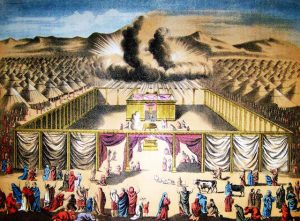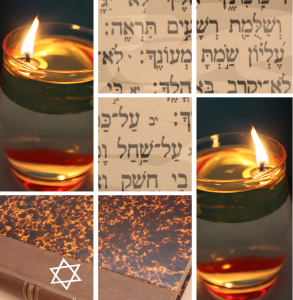I believe many, studying along with the weekly portion, may share your questions. The answer to your first question is actually the answer to your second question as well. It entails a better understanding of the tabernacle (mishkan).
The Torah says “Make for Me a mishkan (tabernacle/dwelling place) and I will dwell amongst you” (Ex. 25:8). It should have said “and I will dwell in it”; this is like a homeless person asking a group of people “build a home for me so I can move in with you”!
The sages explain that the purpose of the mishkan was not that G-d should dwell within it, rather it should be a conduit through which the Shechinah (Divine Presence) should fill all the Jewish homes. An electric power plant is not there for the electricity to remain within it, but to run wires which bring the warmth and light of that energy to all the homes throughout the city.
The deeper understanding of this is that the mishkan was a microcosm of the entire universe. Every step of the six days of creation and Shabbos have a direct parallel in the building of the mishkan (Midrash Tanchuma; Pekudei 3). All the elements of the universe have a hint, in miniature, in the mishkan.
The Kabbalistic sources take this a step further; every person is also a microcosm of the entire universe. The Zohar teaches that every organ and limb of our bodies correspond to a physical or spiritual part of the universe, and to a section of the mishkan. The mishkan is a type of spiritual mirror of the human experience. The human heart, for example, corresponds to the chamber of the mishkan called the kodesh hakadoshim, or the “holy of holies.” Just like the heart pumps the life blood throughout the body, so too the holy of holies, which holds the ark and tablets, transmits the spiritual energy throughout the mishkan and from there to the world.
This is why the purpose of the mishkan is not to only have G-d’s Presence dwell within it, rather to serve as a conduit to bring the Shechina into the homes and hearts of every Jew, which correspond to that very mishkan. This is a profound lesson for our lives even today. We need to transform our own lives, our bodies and our homes into sanctuaries where the Shechina will want to dwell.
The Patriarchs and Matriarchs lived lives so filled will holiness that they were a living embodiment of the mishkan, and merited the dwelling of the Shechina in their persona and their tents. The Jews lost that connection while in Egypt. When they left Egypt, although they were physically free, they were not truly considered redeemed until they returned to that elevated state of the dwelling of the Shechina amongst them. This was attained by building that dwelling place of the mishkan. Only then were they spiritually redeemed as well and the exodus from Egypt was complete. Hence, these portions appear in the book of Exodus (Nachmanide’s intro. to Exodus).
Sincerely,
Rabbi Yerachmiel Fried


